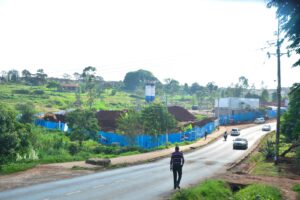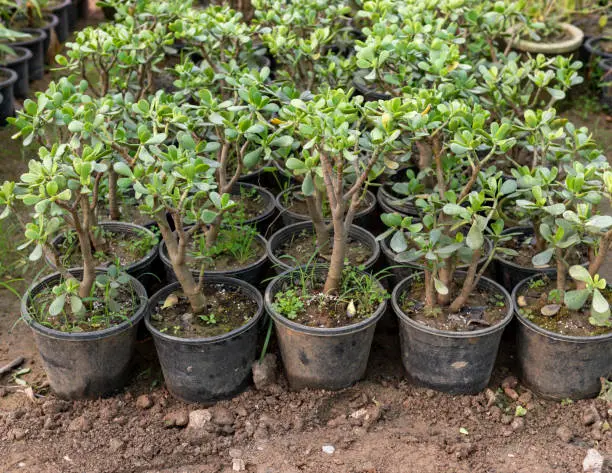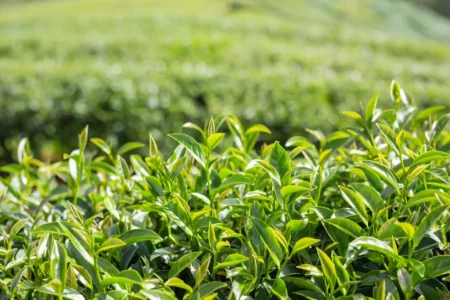Introduction: The Power of a Well-Run Nursery
This guide offers a comprehensive roadmap for smallholder farmers to establish and manage a successful tree nursery, drawing inspiration from proven practices in Kenya, as supported by the World Agroforestry Centre (ICRAF). Designed with a pro-poor, resource-efficient, and women-friendly approach, this guide emphasizes practical techniques to maximize seedling survival rates. Poor timing, inadequate technical knowledge, and improper care often result in low survival rates for planted trees. By following these steps, farmers can create nurseries that produce healthy, robust seedlings for personal use or market sale.
Phase 1: Laying the Foundation
A. Selecting the Ideal Location
The right location sets the stage for a low-maintenance, productive nursery.
- Water Availability: Ensure a consistent water source, such as a nearby river, pond, or storage tank. Water availability determines the nursery’s size and sustainability.
- Accessibility: Choose a site accessible year-round for customers, staff, and seedling transport to planting sites or markets.
- Site Conditions: Opt for a gently sloping site with good drainage, ample sunlight, and protection from strong winds and livestock.
- Material Access: Source fertile topsoil, sand, and manure locally to minimize costs and effort.
B. Sizing Your Nursery
The nursery’s size depends on your goals and resources:
- Available Space: Smallholder farms may have limited space, but larger areas like schoolyards or church grounds can accommodate bigger nurseries.
- Growing Method: Decide between pots, seedbeds, grafts, or bare-root cuttings, as each requires different space allocations.
- Storage Needs: Allocate space for mixing and storing soil, sand, and manure.
- Seedling Goals: Estimate the number of seedlings for personal use or sale. Start conservatively to gauge market demand.
C. Crafting the Perfect Soil Mix
A fertile, well-draining soil mix is critical for healthy seedlings.
- Soil Collection: Clear weeds and debris from the collection site, then dig topsoil to a depth of 10 cm.
- Preparation: Sieve the soil to remove stones and roots for a uniform texture.
- Mix Ratio: Combine 2 parts topsoil, 1 part manure or compost, and 1 part sand (if available) for optimal fertility and drainage.
D. Timing and Seed Selection
- Sowing Schedule: Time sowing to ensure seedlings reach 30–45 cm (species-dependent) before the rainy season (e.g., April or November in Kenya).
- Seed Quality: Source high-quality seeds from local collections (from at least 30 trees for diversity) or reputable suppliers. Bulking seeds with neighbors enhances genetic diversity.
- Viability Testing: Test a small batch of seeds for germination rates to determine sowing quantities accurately.
Phase 2: Nursery Operations Mastery
A. Choosing and Preparing Containers
- Container Options: Use polythene tubes (10 cm diameter, 20 cm deep) or locally available materials like tins, milk packets, or clay pots.
- Drainage: Ensure containers have open bottoms or drainage holes to promote healthy root growth and water flow.
- Filling Technique: Moisten the soil mix, fill containers to three-quarters, and top off loosely to avoid compacting the surface, which can hinder root penetration.
B. Sowing Seeds with Precision
- Depth and Spacing: Sow seeds 5 mm to 1 cm deep, depending on size. In seedbeds, space seeds 10 cm apart in rows 10 cm apart to prevent overcrowding.
- Fine Seeds: For small seeds (e.g., Eucalyptus, Casuarina), mix with sand and broadcast evenly in transplant beds to avoid damping off.
- Shade Protection: Cover sown seeds with light grass or netting to shield them from harsh sunlight.
C. Pricking Out Seedlings
Pricking out involves transferring seedlings from seedbeds to containers.
- Timing: Perform when seedlings are 2 cm tall, typically two weeks after sowing.
- Preparation: Water seedbeds and containers thoroughly and provide shade.
- Technique: Gently hold seedlings by their leaves (not stems) to avoid damage. Place extracted seedlings in water immediately to prevent root drying.
- Final Steps: After transplanting, water again and press soil gently around roots to eliminate air pockets.
D. Seed Pre-Treatment
Pre-treating seeds enhances germination speed and uniformity.
- Hot Water Soak: For hard-coated seeds (e.g., Calliandra, Acacia), pour boiling water over seeds, let cool, and soak until swollen.
- Cold Water Soak: Soak soft-coated seeds (e.g., Sesbania, Gliricidia) for 12–48 hours.
- Cracking/Nicking: For very hard-coated seeds (e.g., Melia, Podo), use a knife or stone to nick the coat, allowing water penetration.
Phase 3: Advanced Nursery Management
A. Watering Wisely
- Schedule: Water twice daily (before 9 a.m. and after 4 p.m.) or once in the evening to minimize evaporation.
- Water Quality: Use clean water to prevent disease; avoid contaminated sources like kitchen runoff.
- Method: Use a watering can or a perforated tin to distribute water gently, reducing soil erosion.
- Balance: Avoid over- or under-watering to prevent waterlogging or drought stress.
B. Root Pruning for Resilience
- Purpose: Prevent roots from growing into the ground, which complicates transport and weakens seedlings if cut late.
- Frequency: Prune every 2–3 weeks using a sharp knife or wire after watering.
- Post-Pruning Care: Water thoroughly to reduce moisture stress.
- Pro Tip: Place containers on stones or polythene sheets to minimize root penetration and pruning frequency.
C. Hardening Off for Field Readiness
- Timing: Begin 2–3 weeks before planting.
- Process: Gradually remove shade to increase sunlight exposure. Reduce watering to twice, then once weekly, allowing soil to dry and seedlings to wilt briefly. Regularly prune roots or rearrange pots.
- Goal: Prepare seedlings for harsh field conditions to boost survival rates.
D. Pest and Disease Control
- Damping Off: Prevent this fungal disease by maintaining optimal sowing density and watering levels.
- Termites: Apply a 2–3 cm layer of ash on beds, remove the termite queen, or use chemicals like dieldrin in severe cases. Wash milk packet containers with soap or insecticide.
- Wilting: Address overcrowding by spacing seedlings or planting them out promptly.
- Physical Protection: Use fences to deter livestock, wildlife, and human interference.
Phase 4: Planting and Post-Planting Care
A. Timing and Site Preparation
- Planting Window: Plant after two weeks of rain or when soil is soaked to 30 cm deep.
- Hole Preparation: Dig holes (30 cm x 30 cm to 60 cm x 60 cm) before the rainy season to soften soil and capture moisture.
- Transport: Water seedlings before transport, keep them upright, and avoid stacking to prevent damage.
B. Planting Technique
- Hole Refilling: Fill a quarter of the hole with wet topsoil, optionally mixed with manure.
- Container Removal: Tear off polythene tubes or tap tins gently to free seedlings without damaging roots.
- Placement: Set seedlings at the same depth as in the container, cover with topsoil, then subsoil, and firm gently with your feet.
- Water Management: Shape soil into a basin to catch rainwater and water immediately after planting.
C. Post-Planting Care
- Mulching: Apply dry grass, leaves, or small stones to retain moisture and reduce evaporation.
- Water Harvesting: In dry areas, create shallow trenches or ridges to channel rainwater to planting holes.
- Protection: Build stick or thorn fences to shield seedlings from animals and children.
Phase 5: Long-Term Strategies and Considerations
A. Managing Overgrown Seedlings
If seedlings (around 1.5 ft tall) cannot be planted or sold, trim their tips to halt growth and maintain quality for the next planting season.
B. Alternative Propagation Methods
- Direct Sowing: Suitable for species like Sesbania or Albizia, ideal for live fencing or soil fertility enhancement.
- Stem Cuttings: Use for Gliricidia or Mulberry to create dense hedges. Store cuttings in shade and water lightly before planting during the rainy season.
C. Financial Planning
To turn your nursery into a profitable venture, research cost analysis, budgeting, and pricing strategies. Consult local agricultural extension services or NGOs for market insights.
D. Species-Specific Guidance
Seedling size, pruning intervals, and growth periods vary by species (e.g., Eucalyptus, Calliandra). Contact institutions like KEFRI or the Forest Department for tailored advice.













